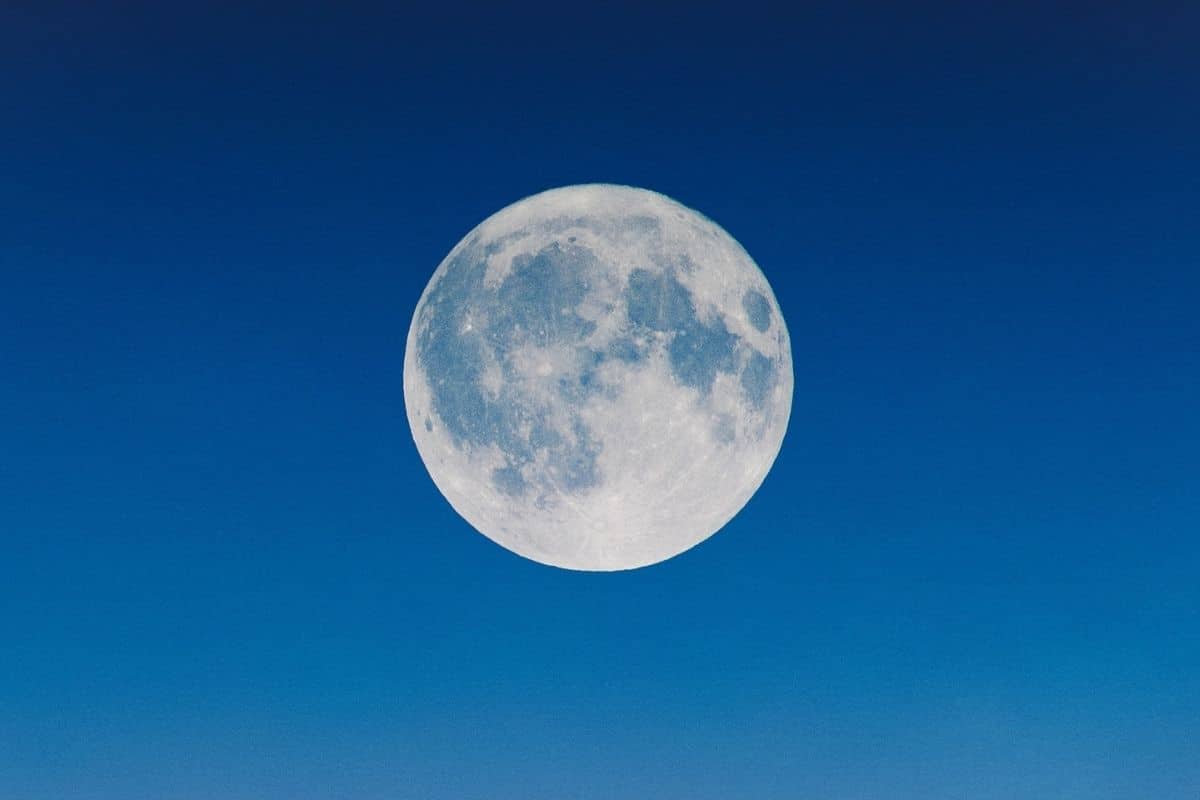

A first: it is the first time that an instrument on site has shown that the moon has water.
The Chinese lunar lander Chang’E-5 landed on the moon in 2020, in an area called Oceanus Procellarum. The area is generally bone dry. But a boulder – located a short distance from the landing site of Chang’E-5 – is an exception. The stone appears to contain a relatively large amount of water, according to measurements carried out by Chang’E-5 himself. And with this, it has now been demonstrated for the first time on site that the moon has water.
Spectrometer
That can be read in the magazine Science Advances. The study revolves around measurements performed by the spectrometer onboard Chang’E-5. A spectrometer is a scientific instrument that – in this case – collects sunlight reflected from the lunar surface. Because the extent to which sunlight is reflected or absorbed is strongly determined by the properties of the surface, it can be derived from that reflected sunlight which minerals the surface harbors and whether water is sometimes also present in the surface.
Dry moon soil
The spectrometer aboard Chang’E-5 made several measurements at the landing site. An analysis of those measurements shows that most of the lunar soil in the vicinity of Chang’E-5 is extremely dry and can match the lunar samples collected and brought to Earth half a century ago during the Apollo missions. . But the spectrometer wasn’t just looking at the surrounding lunar soil; the instrument also collected sunlight reflected from a rock near the lander. And an analysis of that reflected sunlight now shows that that rock contains a relatively large amount of water.
Scoop
This is not the first time that researchers have shown that the moon harbors water. For example, measurements carried out by lunar orbiters – satellites orbiting the moon – and analyzes of rocks and soil samples collected on the moon and returned to Earth already showed that our natural satellite has water. However, it is the first time that an instrument has found evidence of the presence of water on site.
Volcanic origin
This makes it quite a remarkable study. But what’s equally interesting is the fact that the rock in which that water was found probably doesn’t belong at the Chang’E-5 landing site, but may have come from the moon’s interior. “It’s most likely an igneous rock, similar to the lava rocks we see near Hawaii’s beach,” said study researcher Shuai Li, of the University of Hawaii and member of the international research team that oversees the measurements taken by the on-board spectrometer. of Chang’E-5, bow. For now, the researchers assume that the rock is of subterranean volcanic origin and surfaced and solidified elsewhere before being thrown to the current landing site of Chang’E-5.
The fact that this rock, most likely from the interior of the moon, harbors a relatively large amount of water, cautiously hints that the moon’s mantle contains quite a lot of water. It is in line with previous research – in which Li also collaborated – in which, based on satellite data, it was cautiously concluded that volcanic rock on the moon harbors water. “The pyroclastic flows on the moon all appear to be rich in water, suggesting that the same is true for the mantle,” study researcher Ralph Milliken concluded in 2017. And now the Chinese lunar rover may have found clues to the existence of these on the ground. our until recently unknown underground source of water on the moon.
moon missions
If the moon’s mantle is indeed rich in water, and some of that water surfaced long ago during volcanic eruptions, that could be very good news for future lunar missions, with space agencies looking to allow astronauts to spend long periods of time on the moon’s surface. Those missions could be made a lot easier if those astronauts could draw on the water resources available on the moon for water—as well as oxygen and rocket fuel. “Previous studies have suggested that water ice can be found in permanently shadowed areas near the moon’s poles, but the pyroclastic deposits are in places that are much more accessible,” Li said in 2017. And although the concentration of water is quite low, , the deposits are very large and so there may still be a lot of water stored in them. And it does not seem inconceivable to extract some of that water from the deposits. “Anything that can prevent future moon travelers from having to bring large amounts of water from home is a plus,” Li said earlier.
While the new study further fuels earlier optimism about accessible water resources on the moon, some caution is in order. More research into the possibly water-rich moon mantle in general and the rock near Chang’E-5 in particular is urgently needed, the researchers emphasize. For example, Li hopes soon to validate the findings based on the spectrometer data using lunar samples collected by Chang’E-5 and returned to Earth in December 2020. Further research will also have to show whether the detected water is hydroxyl or molecular water and actually comes from the interior of the moon.
Source material:
“Water on the Moon; team confirms with ground equipment– University of Hawaii
“Chang’E-5 Lander Makes First Onsite Detection of Water on Moon” – Chinese Academy of Sciences
Image at the top of this article: Alex Andrews via Pexels